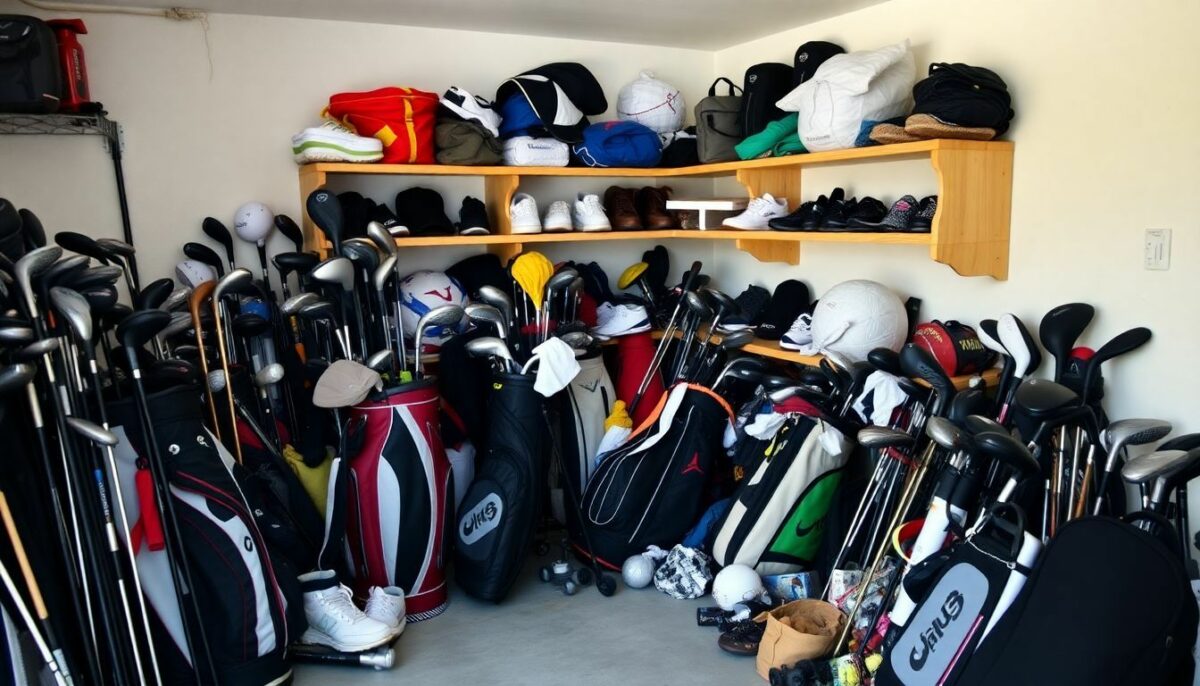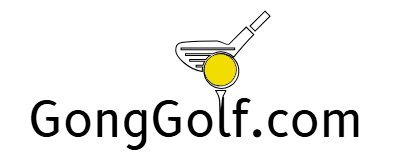Most golfers have concerns regarding the expensive costs on how to begin playing golf. They doubt whether their wallets can stand it. But ironically, golf is becoming less expensive and more inclusive these days compared to the past when the cheapest basic beginner’s set of clubs was around $300.
The document offers a comprehensive analysis of practically incurred costs in addition to golf gear and green fees to lessons. It also gives simpler ways to save money. It might even surprise the readers that they could have accessibility to golf after all.
Key Takeaways
- Getting into golf will set you back roughly $1,800–$3,300 your first year—clubs, lessons, green fees, the whole nine yards.
- Starter golf club sets can cost around $300 for the basics, or skyrocket past $1,000 if you spring for high-end gear; used clubs from thrift shops or online markets can slash your costs nicely.
- Private lessons usually go anywhere from $50 to $150 an hour, but if you’re fine learning in a group, beginner-friendly classes like PGA’s “Get Golf Ready” hand out five full lessons for a bargain price of $99.
- Most public courses charge about $40–$50 each round; weekday or twilight hours tend to be cheaper, so play smart and save some cash.
- Little things like balls ($40–$50 for 24), gloves ($20 a pop), and renting carts add up fast; small expenses have a sneaky way of becoming big budgets.
Initial Costs of Golf Equipment

Getting started with golf means buying the right gear, and costs can add up fast. New players face choices about clubs, bags, shoes, and other items that range from budget-friendly to wallet-busting.
Smart shoppers can find used golf clubs that perform well without the premium price tag. Golf equipment stores often offer starter packages that include everything a beginner needs to hit the fairways.
Beginner Golf Club Sets
Starter golf club sets are a great way to dip your toes gently into golf without overspending. Basic sets usually run about $300, though if you’re feeling fancy, higher-end options push past a grand.
Local golf stores commonly stock decent adult sets for around $500—giving you just enough clubs to tackle a full round comfortably. Thrifty beginners often find real gems going the used route, perfect for testing the waters before committing serious cash.
The right beginner clubs won’t make you a pro overnight, but they’ll make the learning curve much less steep.
If you’re shopping for kids, solid brands like Callaway deliver quality youth sets at roughly $249, while Wilson offers junior options around $129. Bargain hunters can even spot generic junior club sets for as low as $72—perfect for those little golfers still deciding if it’s their thing.
Beginner sets usually feature the basics—irons, driver, putter—just the right combo to boost your confidence from driving range to green.
Golf Bags and Accessories
After choosing clubs, you’ll need a sturdy golf bag to lug all your gear around the course. A standard golf bag costs around $100, and that’ll hold your clubs, balls, tees, and other odds and ends.
But wait, we’re not done yet—there’s more to toss into your cart. Most golfers grab a simple towel for about $15, perfect for wiping dirt and grass off clubs after each swing. Then, there’s the trusty golf glove, around $20, that’ll keep your grip steady and stop those blisters from ruining a good round.
Sure, each item seems cheap enough alone, but together, your wallet might let out a faint cry. Starting golf on public courses can quietly chip away at your budget before your first swing even makes contact.
Golf Shoes and Clothing
Golf isn’t just about clubs and fancy bags—your outfit and shoes matter too. Good golf shoes keep you steady and balanced during your swings, and thankfully, they come in all price ranges.
A simple FootJoy pair can cost as little as $35, or you might splurge around $70 for something a bit snazzier.
Clothing prices swing wildly, too—most golfers tend to drop anywhere from $100 to $500 on their style. It usually depends on taste, budget, and how much flair you’re after. Jenny, for instance, kept things thrifty by scoring clearance shoes for just $100 and spending another $100 for her outfits.
Bob, on the other hand, took things up a notch, shelling out $500 for fancy apparel and another $200 for top-end shoes. It all comes down to what fits your tastes, feels comfortable, and won’t leave your wallet sobbing on the 18th hole.
Cost of Golf Lessons
Golf lessons range from $50 to $150 per hour for private coaching, but group sessions can cut this cost in half. A beginner might need 5-10 lessons to grasp the basics, making this a major part of the startup budget.
Many public courses offer package deals that combine green fees with instruction time, saving money for new players.
Individual Lessons
Private lessons can quickly boost your swing, thanks to one-on-one coaching from an experienced instructor. Typically, pro teachers charge about $50 to $100 an hour, depending on their background and where you live—a big-city pro will cost more than your local small-town instructor.
For budget-minded folks, the PGA offers a great deal called “Get Golf Ready”, which runs only $99 for five full lessons. It’s a steal, especially if you’re just starting out.
Your instructor watches carefully, catching those pesky little issues that creep into your swing. They’ll guide you through grip improvements, your stance, and swing techniques step-by-step.
Having someone right there to spot and fix problems speeds up improvement way faster than learning solo. After all, practice makes perfect—but only if you’re practicing it right.
If you’ve ever hacked stubbornly at the ball without help—and we’ve all been there—you know the value of expert eyes. Doing things alone can feel like spinning your wheels, getting nowhere fast.
With affordable courses out there like the PGA’s program, easing into better playing becomes pretty painless. Think of it as hiring a GPS instead of getting lost a dozen times on the same back road.
It’s less frustrating and saves a lot of time.
Even better, group lessons let you make friends on the green while getting better. Those five classes give you enough time to see real change, without emptying your wallet. Pros have a sharp eye and years of experience, quickly spotting moves that keep you slicing or hooking shots into unwanted territory.
They’ll patiently show you how to avoid repeating these errors, step by step.
Group Lessons or Golf Academies
Group lessons can be a fantastic, wallet-friendly way to start golfing. The First Tee, for instance, offers seasonal programs for just $120, a real steal for newcomers stepping onto the course.
For kids aged 5 through 13, academies like TGA Premier have already introduced golfing basics to over 650,000 children in around 3,300 schools all over the country—pretty impressive stuff! Junior camps, like those at Santa Teresa Golf Club, run anywhere from $295 to $595.
Young golfers gain hands-on practice on real putting greens and fairways, all in a relaxed, social setting. Along the way, they’ll probably make new friends, share a few laughs, and maybe even sink some putts.
Fees for Playing Golf
Golf course costs vary from $15 at basic public courses to $200+ at fancy resorts. Players can save money with twilight rates, walking instead of renting carts, and checking for online deals on green fees.
Green Fees at Public Courses
Public golf courses offer an affordable entry point for newcomers to the sport. The standard rate for an 18-hole round typically ranges from $40-$50, though prices vary by location, course quality, and time of year. Smart players take advantage of weekday tee times, which cost less than weekend slots when courses see higher demand.
| Fee Type | Typical Cost | Notes |
|---|---|---|
| Standard 18-Hole Round | $40-$50 | Prices vary by course quality and location |
| Weekday Rates | $30-$40 | Monday through Thursday offers better value |
| Weekend/Holiday Rates | $45-$60 | Premium pricing during peak demand times |
| Twilight Rates | $25-$35 | Late afternoon discounts (may not finish 18 holes) |
| Youth On Course Program | $60 annual fee + $5 per round | Exceptional value for junior golfers |
| 9-Hole Rates | $20-$30 | Half-round option for time-constrained players |
Membership Costs at Private Clubs
While public courses offer pay-as-you-play flexibility, private clubs demand a more substantial financial commitment. These exclusive establishments offer pristine conditions and many perks, but at a price that might make some golfers think twice. Private club costs vary widely based on location, amenities, and prestige.
| Membership Type | Typical Cost Range | What’s Included |
|---|---|---|
| Initiation Fee | $5,000 – $100,000+ | One-time payment to join the club |
| Full Membership (Annual) | $5,000 – $50,000+ | Complete access to all facilities |
| Monthly Dues | $300 – $1,000+ | Course maintenance, clubhouse access |
| Food & Beverage Minimum | $600 – $2,400 annually | Required spending at club dining facilities |
| Cart Fees | $20 – $100 per round or monthly plans | Golf cart usage |
| Sample Member Profile | Bob pays $500 monthly membership plus $100 monthly cart fees | Typical mid-range club costs |
Additional Expenses
Golf comes with hidden costs beyond clubs and green fees. Players need to budget for golf balls, tees, and gloves that wear out with regular play. These small items add up fast, especially for beginners who might lose several balls per round.
Golf Balls, Tees, and Gloves
Players have to pick up lots of little items, and those small costs quickly add up. For instance, two dozen decent golf balls will usually set you back around $40 to $50. Sure, tees tend to be an easier win on your wallet, as plenty of courses toss some your way, free at the opening hole.
A comfortable golf glove, which usually runs about $20, is another regular buy that gives you a better grip and just feels nicer on your hand. Little things like these may seem minor at first, but they quickly become part of your routine expenses.
New golfers often overlook these necessary extras, and reality hits pretty fast once the cash register rings.
Cart Rentals or Walking Fees
Golf carts sure make life easy, but as my buddy Bob learned, comfort has a price—around $100 a month, to be exact. Lots of folks choose to hoof it instead and save a nice chunk of change.
Getting yourself a push cart for just about a hundred bucks is easy on the wallet compared to endless rental fees. Plus, strolling the fairways gives you fresh air, exercise, and gets you away from the noisy cart crowd.
You’re out there to enjoy the game, right? Walking keeps golfing fun without emptying your pockets, especially at public courses.
Conclusion
Getting started in golf won’t empty your savings account. If you’re smart about it, snagging secondhand clubs can save big bucks, especially at thrift stores or online marketplaces.
Public courses are your best friends here—skip the fancy clubs with hefty membership fees. Avoid renting golf carts; walking helps your wallet and your health, two birds with one stone.
Your first year golfing might cost between $1,800 and $3,300, based on gear choices, rounds played, and how picky you are about your golf style. Even with budget-friendly gear, spending some cash at first is hard to avoid.
Golf’s got perks beyond swinging a club. It’s fantastic exercise; walking 18 holes burns calories while keeping stress at bay. Plus, it’s a relaxed way to meet new folks, swap funny stories, and bond over missed putts.
The friendships alone often justify the price tag.
FAQs
1. What’s the minimum cost to start playing golf?
Around $500 to $800 will get you going. That includes a basic set of used clubs, a simple bag, some golf balls, tees, and a glove. Public courses charge the lowest green fees, perfect for your initial rounds.
2. Do I need expensive golf shoes right away?
Definitely not! Fancy golf kicks can wait until you catch the golf bug. Regular athletic shoes are just fine for starters. Once you’re really into it—and trust me, it can happen fast—then splurge on specialized shoes.
3. How much should I budget for golf lessons?
Group sessions usually cost about $20-$50 each, while private lessons come in around $50-$100 per hour. Most beginners get the hang of things after about 5-10 lessons, without going broke.
4. Are annual dues required to play golf?
No way! At public courses, you just pay green fees each round. Country club memberships can run anywhere from $1,500 to well above $5,000 per year. But no worries, municipal courses give you affordable options without any annual commitment.
5. What golf equipment can I skip buying at first?
Forget about fairway woods, gap wedges, and those pricey golf balls, at least in the beginning. Stick to the basics—a driver, 7-iron, 9-iron, putter, and budget-friendly golf balls. You’ll save cash while figuring out if golf is actually your cup of tea.

